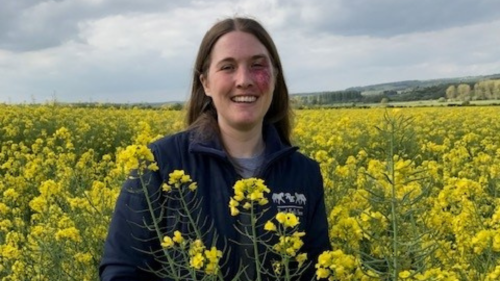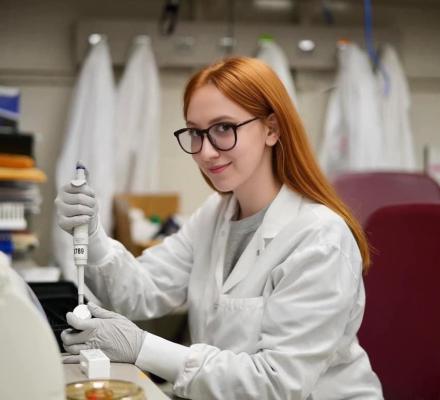
-
Understanding primary immunodeficiency (PI)

Understanding PI
The more you understand about primary immunodeficiency (PI), the better you can live with the disease or support others in your life with PI. Learn more about PI, including the various diagnoses and treatment options.
-
Living with PI
-
Addressing mental health
-
Explaining your diagnosis
- General care
- Get support
- For parents and guardians
-
Managing workplace issues
- Navigating insurance
-
Traveling safely

Living with PI
Living with primary immunodeficiency (PI) can be challenging, but you’re not alone—many people with PI lead full and active lives. With the right support and resources, you can, too.
-
Addressing mental health
-
Get involved

Get involved
Be a hero for those with PI. Change lives by promoting primary immunodeficiency (PI) awareness and taking action in your community through advocacy, donating, volunteering, or fundraising.
-
Advancing research and clinical care
-
Grants
-
IDF surveys
-
Participating in clinical trials
-
Diagnosing PI
-
Consulting immunologist
-
Clinician education

Advancing research and clinical care
Whether you’re a clinician, researcher, or an individual with primary immunodeficiency (PI), IDF has resources to help you advance the field. Get details on surveys, grants, and clinical trials.
-
Grants
Children with chronic granulomatous disease (CGD) often seem healthy at birth but develop severe infections in infancy and during early childhood. This was the case of Erik Mainville of Interlachen, Florida.
When Erik was born, he appeared to be a normal, healthy baby. In those early years, however, he remembers many infections, pneumonia episodes, and trips to the hospital.
“My early childhood was like a roller coaster ride,” explains Erik, now 33. “One week I’d be fine and the next week I’d be in the hospital.”
This roller coaster of ups and downs continued until age five when once again, Erik found himself in the hospital. This visit would be different—and life-changing. An astute immunologist began looking deeper into Erik’s health records and suspected something bigger was going on. The doctor referred Erik to the University of Florida, where he finally received a diagnosis of CGD.
As it turns out, like many people in the CGD community, indications of Erik’s CGD diagnosis existed in his health records all along. It just took someone to connect the clues found in his health history. Unfortunately, many people with a primary immunodeficiency disease go undiagnosed for many years. These longer times to diagnose, like Erik’s, are often periods of repeated infections for patients.
Erik remembers laying in the hospital bed following the diagnosis and the doctors telling him and his mother that he would need to start interferon injections.
“I’m not sure I entirely understood what was happening,” says Erik. “They brought an orange into the room and started showing my mother how to inject properly.”
As one can imagine, Erik hated the injections at first. Nevertheless, his mother was patient and succeeded in soothing his anxiety.
“She would explain how this would keep me healthy so I wouldn’t miss hanging out with my friends. That was something I could related to as a kid.”
Eventually, he became used to the injections. As he got into his teen years, his mother started transitioning the responsibility of injections to Erik.
“She did a great job in preparing me for adulthood and doing my own interferon injections.”
These days, he continues with a regimen of interferon injections, antibiotics, and antifungals. The trilogy of treatments seems to be doing the trick and keeping Erik healthy.
“The interferon has been a lifesaver,” Erik says. “I actually will notice that others around me get sick more frequently than me.”
He does not hold back from living, but he does understand his limitations.
“With CGD, the stakes are high, and the choices you make are critical,” he explains. “The impact of activities such as swimming in a lake or gardening has to be considered and deliberated as they could be life threatening.”
When asked about his life today, you can hear him perk up. Married for 14 years and the father of a beautiful girl, Erik has a bright future.
“Life is looking up. I don’t ask questions like, why me? I just open my eyes to the richness of my life.”
Thank you to Erik for sharing his story! Would you like to share your story of living with CGD? Contact us: info@primaryimmune.org.
This content should not be used as a substitute for professional medical advice. In all cases, patients and caregivers should consult their healthcare providers. Each patient’s condition and treatment is unique. The benefits and risks of any treatment should be discussed with the patient’s provider.
Related resources
Sign up for updates from IDF
Receive news and helpful resources to your cell phone or inbox. You can change or cancel your subscription at any time.





The Immune Deficiency Foundation improves the diagnosis, treatment, and quality of life for every person affected by primary immunodeficiency.
We foster a community that is connected, engaged, and empowered through advocacy, education, and research.
Combined Charity Campaign | CFC# 66309




